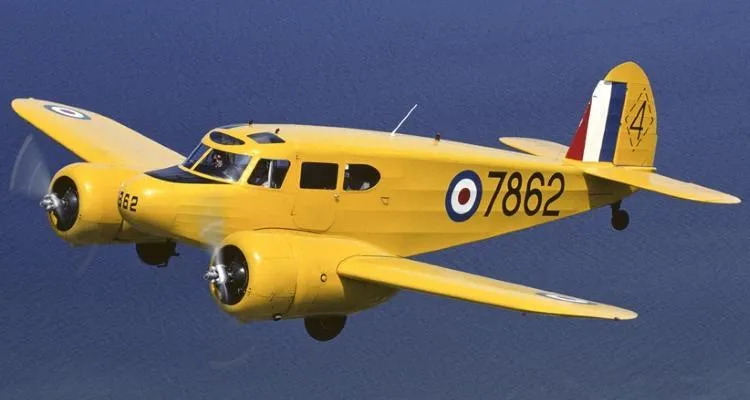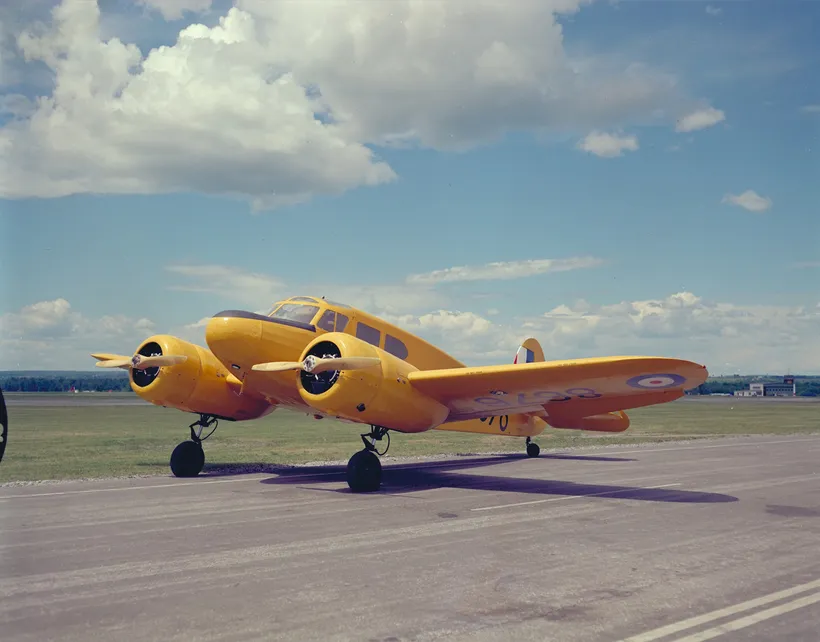Gibson, Harry Frank
Killed in Flying Accident 1942-01-16


Birth Date: 1921
Born:
Son of Robert W. Gibson and Anna Marie Gibson, of Riverhurst.
Home: Riverhurst, Saskatchewan
Enlistment:
Enlistment Date: Unknown
Service
RCAF
Unit
12 SFTS- Service Flying Training School
Base
Brandon, Manitoba, Canada
Rank
Leading Aircraftman
Position
Leading Aircraftman
Service Numbers
R/107632
First Burial
 Riverhurst Cemetery, Riverhurst, Saskatchewan
Riverhurst Cemetery, Riverhurst, Saskatchewan
This incident involved multiple aircraft:
- Crane Mk. I Serial: 7826
- Crane Mk. I Serial: 7791
All the above aircraft in the above list are referenced in this report.
Cessna Crane

Canadian Warplane Heritage Museum
The Cessna T-50 Crane was the RCAF version of the Cessna AT-17 Bobcat, a twin-engined advanced trainer designed and made in the USA during the Second World War. It served to bridge the gap between single-engined trainers and twin-engined combat aircraft.
First flown in 1939, the American-built Cessna Crane was developed as a five-seat, light transport civilian aircraft. It was originally intended to serve only a minor role within the BCATP (an initial 180 were ordered in 1940) until the Canadian-built Avro Ansons became available in greater numbers. This was the first large order that Cessna had received for one of its products. Eventually, more than 5,400 Cranes would be produced, of which 826 saw service with the RCAF. Cessna Cranes were used primarily to teach future bomber pilots, after they had received their initial training, to fly multi-engined aircraft at Service Flying Training Schools in western Canada.
Powered by 245-horsepower Jacobs R-755-9 radial engines, Cessna Cranes featured wooden wings and tail married to a fuselage constructed of welded steel tubing. Most of the aircraft was fabric-covered. It was cheap, reliable and relatively easy to fly, with a top speed of 315 kilometres (195 miles) per hour.
The Crane provided twin-engined complexity with economy of operation and went on to become one of the most important aircraft used by the BCATP. Cranes continued to serve with the RCAF until 1947, after which many were purchased by private individuals and companies.
Nicknamed the Bamboo Bomber because of its largely wood construction, the Crane had a reputation as a stable and reliable aircraft. Although not an ideal training aircraft because of its poor single-engined performance and load-carrying capability, it performed its duties satisfactorily and helped train several thousand bomber pilots.Bomber Command Museum of Canada
12 SFTS (12 Service Flying Training School)
Graduates of the EFTS "learn-to-fly" program went on a Service Flying Training School (SFTS) for 16 weeks. For the first 8 weeks the trainee was part of an intermediate training squadron; for the next 6 weeks an advanced training squadron and for the final 2 weeks training was conducted at a Bombing & Gunnery School. The Service schools were military establishments run by the RCAF or the RAF.
There were two different types of Service Flying Training Schools. Trainees in the fighter pilot stream went to an SFTS like No. 14 Aylmer, where they trained in the North American Harvard or North American Yale. Trainees in the bomber, coastal or transport pilot stream went to an SFTS like No. 5 Brantford where they learned multi-engine technique in an Airspeed Oxford, Avro Anson or Cessna Crane.

For More information on RCAF Station Brandon see here


Crane 7826
Crane Mk. I 7826
First assigned to No. 12 Service Flying Training School at Brandon, Manitoba. Category A crash at 10:15 on 16 January 1942, 7 miles north-east of Rivers, Manitoba, following a mid-air collision. This aircraft came up in front of Crane 7791 during formation training. 7791 returned to land without further damage, this aircraft crashed and was destroyed. Scrapped by No. 12 SFTS.1941-07-17 Taken on Strength No. 2 Training Command 2019-08-20
1942-January-16 Accident: 12 Service Flying Training School Loc: NEast Of Rivers Names: Gibson | Mcrae
1942-02-03 Struck off Strength Struck off, reduced to spares and produce 2019-08-20
Crane 7791
Crane Mk. I 7791
First assigned to No. 12 Service Flying Training School at Brandon, Manitoba. Category C7 damage to starboard wing tip and propeller at Brandon, at 22:45 on 13 October 1941. This aircraft taxied into Crane 7751. Category C7 damage at 10:15 on 16 January 1942, 7 miles north-east of Rivers, Manitoba. Crane 7826 came up in front of Crane 7791 during formation training, 7826 crashed and was destroyed. To Prairie Airways at Moose Jaw, Saskatchewan for overhaul, 19 August to 29 September 1943. To storage with No. 4 Training Command when completed, issued from storage on 19 October 1943 for use by No. 2 Flying Instructors School at Pearce, Alberta. To workshop reserve at No. 2 FIS, 27 December 1943 to 2 February 1944. To No. 4 Training Command when completed. To storage with No. 2 Training Command on 16 June 1944. To No. 2 Air Command on 1 December 1944, still in storage. Issued from storage on 2 January 1945. Pending disposal from 13 July 1945. First stored at No. 4 Service Flying Training School at Saskatoon, Saskatchewan, where it was noted with 2666:10 total time, 697:50 since overhaul. By 27 November 1945 on the books of Maintenance Command, stored at the Reserve Equipment Maintenance Satellite at Saskatoon, Saskatchewan. Sold to Siple Aircraft.unkown date Accident: 2 Flying Instructor School Loc: Aerodrome Names:
1941-06-25 Taken on Strength No. 2 Training Command 2019-08-20
1941-October-13 Accident: 12 Service Flying Training School Loc: Brandon Manitoba Names: Howell | Wood
1942-January-16 Accident: 12 Service Flying Training School Loc: NEast Of Rivers Names: Gibson | Mcrae
1946-01-02 Struck off Strength Struck off, to War Assets Corporation for disposal 2019-08-20
 Canadian Virtual War Memorial
Canadian Virtual War Memorial Commonwealth War Graves Commission
Commonwealth War Graves Commission www.findagrave.com
www.findagrave.com Cessna Crane Trainer
Cessna Crane Trainer Wikipedia Crane Trainer
Wikipedia Crane Trainer Harold A Skaarup Web Page
Harold A Skaarup Web Page